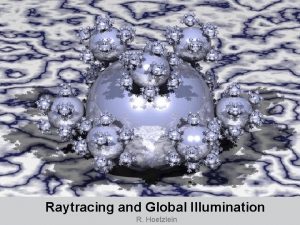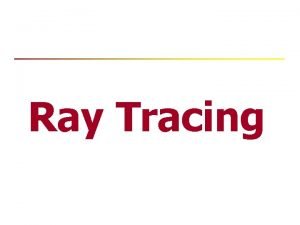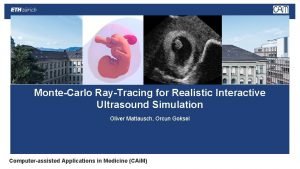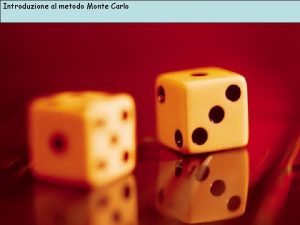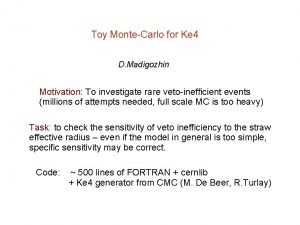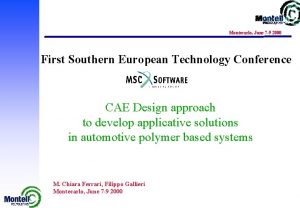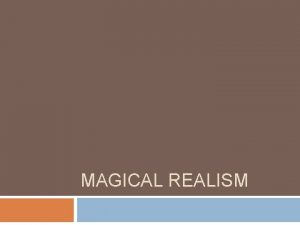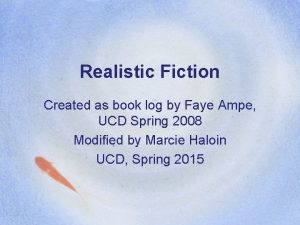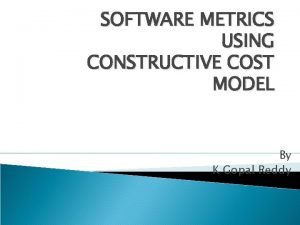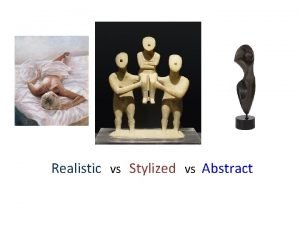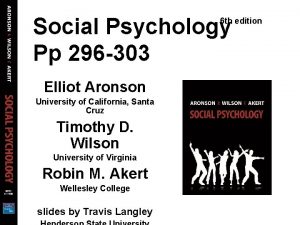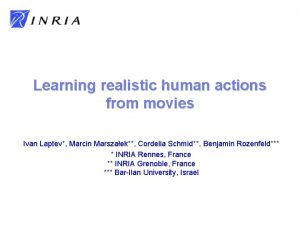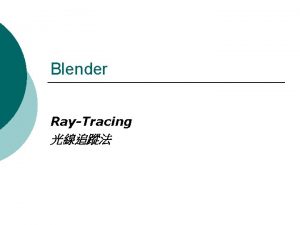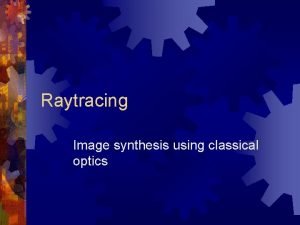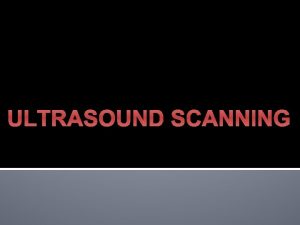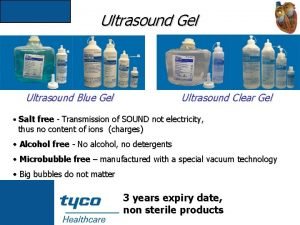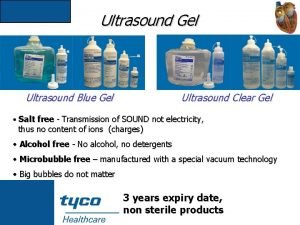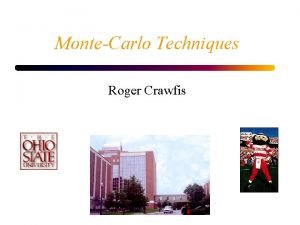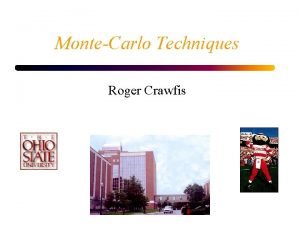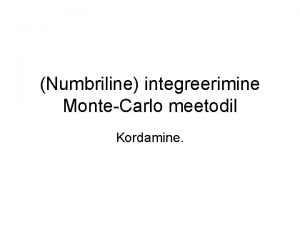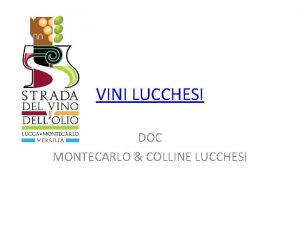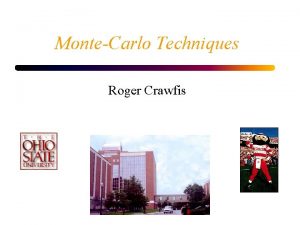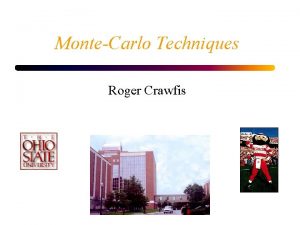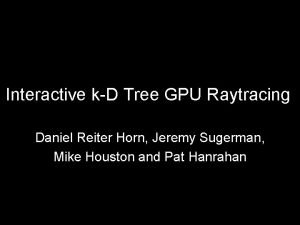MonteCarlo RayTracing for Realistic Interactive Ultrasound Simulation Oliver





![Raytracing-Based Ultrasound Simulation Binary deterministic raytracing [Whitted 80] Problems: exponential complexity poor parallelism on Raytracing-Based Ultrasound Simulation Binary deterministic raytracing [Whitted 80] Problems: exponential complexity poor parallelism on](https://slidetodoc.com/presentation_image_h/2683e08e6ea1869bcad8d58f56bbb659/image-6.jpg)
















- Slides: 22

Monte-Carlo Ray-Tracing for Realistic Interactive Ultrasound Simulation Oliver Mattausch, Orcun Goksel Computer-assisted Applications in Medicine (CAi. M)

Ultrasound (US) Simulation for Training § § § Ultrasound: radiation-free, low-cost, real-time Low SNR + ultrasound artifacts require training Training difficult, e. g. , of rare pathologies Few volunteers for transvaginal, transrectal, biopsy Huge potential for interactive VR simulator Goal: plausible simulation for experts US image of pregnancy

Ultrasound Image Generation single element receiving echo, creating radio-frequency (RF) line transducer elements (128 -256 crystals) many element transmitting beamformed point-spread function beam forming due to negative/positive interference

Ultrasound Image Generation Reflections interactions with large-scale structures (≫wavelength) dictated by Snell’s law Ultrasound artifacts e. g. , shadows due to beam refractions Ultrasound speckle interactions with microscopic structures (<wavelength) act like point scatterers US image of pregnancy

Raytracing-Based Ultrasound Simulation § Handles large-scale interactions § Input: § CT image [Salehi et al. MICCAI 15] § Triangle model [Bürger et al. TMI 13] (most flexible) artificial phantom human anatomy model
![RaytracingBased Ultrasound Simulation Binary deterministic raytracing Whitted 80 Problems exponential complexity poor parallelism on Raytracing-Based Ultrasound Simulation Binary deterministic raytracing [Whitted 80] Problems: exponential complexity poor parallelism on](https://slidetodoc.com/presentation_image_h/2683e08e6ea1869bcad8d58f56bbb659/image-6.jpg)
Raytracing-Based Ultrasound Simulation Binary deterministic raytracing [Whitted 80] Problems: exponential complexity poor parallelism on GPU shoot ray/RF line reflection Snell’s law (ratio of impedances) tissue 1 refraction tissue 2 tissue 3

Convolution-Based Ultrasound Simulation § Handles small-scale interactions § Linear approximation of full wave interactions [Karamalis 10, Jensen 04] § Fast separable convolution on GPU: COLE [Gao et al. TUFFC 09] = * tissue representation (scatterer map) convolution ultrasound speckle

Convolution-based Ultrasound Simulation: Tissue Model 3 -parameter tissue model (μ, σ, ρ) (ρ) after convolution with PSF tissue representation (μ, σ) values can be automatically derived from images [Mattausch and Goksel EMBC 15]

State of the Art: Issues § Deterministic model: Infinitely thin perfectly specular surfaces § 3 -parameter tissue model: uniform (toy-like) speckle in-vivo pregnancy deterministic raytracing + convolution

Our Contributions § Improved surface model § Efficient evaluation using Monte-Carlo raytracing § Improved volumetric tissue model

Improved Surface Model: Roughness specular surface model surface roughness model

Improved Surface Model: Roughness fluid-filled spherical object cos∞ distr. cos 100 distr. hypoechoic ‘whiskers’ due to refractions in-vivo example

Improved Surface Model: Thickness flat surface model surface thickness model

Improved Surface Model: (Bone) Thickness in-vivo bone image 0 mm 3 mm 6 mm 9 mm

Efficient evaluation using Monte-Carlo Raytracing stochastic ray paths § US signal after surface intersection PT PT integrate over hemisphere recursive formulation § Intractable for deterministic methods linear complexity easily parallelizable

Monte-Carlo Raytracing: Initialization image plane finite transducer thickness perturbed ray origins

Improved Volumetric Tissue Model cross-section of model on image plane periphery gestational sac bone reflecting tissue rasterize ray segment wrt. tissue parameters stack-based approach to identify tissue T

Improved Volumetric Tissue Model § Small-scale variations: μ, σ, ρ § Large-scale variations: magnitude Al, frequency fl § Implement with high- and low-res 3 D noise texture in-vivo tissue more natural too uniform 3 -parameter model improved model

Results § Implementation: C++ using Nvidia Optix and CUDA 7. 0 § GPU: NVIDIA GTX 780 Ti with 3 GB Pregnancy scene 255 K triangles Image depth 8. 1 cm Transducer frequency 7 Mhz Transducer FOV 99 deg RF lines 192 RF depth 2048 Elevation layers 5

Results: Comparison in-vivo image input 255 K triangles deterministic 2. 8 FPS expert judgement realism: 2 of 7 Monte-Carlo (40 paths) 1. 4 FPS expert judgement realism: 6. 5 of 7

Results: Number of Ray Paths deterministic raytracing frame time: 357 ms 5 paths 303 ms 15 K rays/s 15 paths 384 ms 37 K rays/s 25 paths 476 ms 50 K rays/s 40 paths 714 ms 54 K rays/s

Thank you for your attention! simulated image in-vivo image This work was sponsored by the Swiss Commission for Technology and Innovation (CTI).
 Ferriman-gallwey score
Ferriman-gallwey score Raytracing vs rasterization
Raytracing vs rasterization Hemicube
Hemicube Interactive ultrasound simulator
Interactive ultrasound simulator Montecarlo
Montecarlo Metodo montecarlo esempio
Metodo montecarlo esempio Montecarlo
Montecarlo Montecarlo
Montecarlo Realistic fantasy genre
Realistic fantasy genre Contemporary realistic fiction vs historical fiction
Contemporary realistic fiction vs historical fiction Heartbeat sharon creech summary
Heartbeat sharon creech summary Three little pigs realistic
Three little pigs realistic Realistic conflict theory
Realistic conflict theory Mystery elements
Mystery elements Why is a food web more realistic
Why is a food web more realistic Constructive cost model
Constructive cost model Realistic job preview pros and cons
Realistic job preview pros and cons Stylized vs naturalistic
Stylized vs naturalistic Jigsaw classroom psychology definition
Jigsaw classroom psychology definition Learning realistic human actions from movies
Learning realistic human actions from movies Fiction and non fiction examples
Fiction and non fiction examples Realistic writing emphasizes accuracy of detail
Realistic writing emphasizes accuracy of detail Realistic conflict theory
Realistic conflict theory

